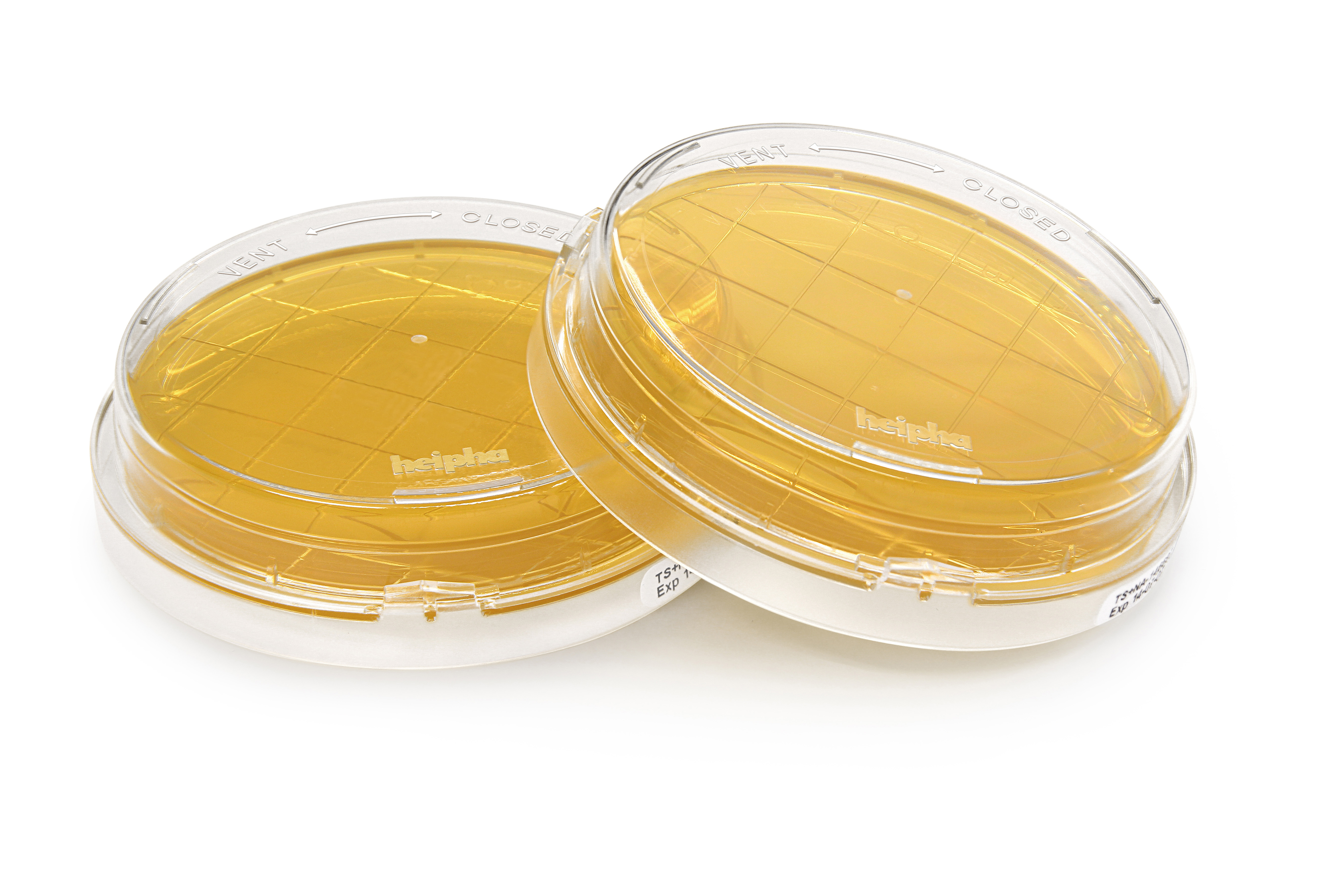Neutralizer A Contact Plates from Merck Millipore Improve Detection of Microorganisms in Isolators and Cleanrooms

Merck Millipore's heipha ICRplus Neutralizer A contact plates improve detection of micro-organisms on disinfected surfaces in isolators and cleanrooms. Common disinfectants may contain residues from a variety of sources that inhibit the detection of microorganisms during surface monitoring, which can lead to false negative results.
Heipha Neutralizer A ICRplus contact plates allow the detection of micro-organisms in the presence of many disinfectants, including those which cannot be sufficiently inactivated by common neutralizers, such as polysorbate 80, lecithin, histidine and thiosulfate. The medium in the plates is supplemented with a mixture of ingredients called Neutralizer A to inactivate residues of a broad range of disinfectants including polyhexamethylene biguanides and quaternary ammonium compounds. The basic medium complies with the formulation of casein soya bean digest agar according to the recommendation of the current European, Japanese and United States Pharmacopoeia.
Heipha Neutralizer A ICRplus contact plates are triple-bagged, gamma-irradiated and the only plates available that feature a two-way closure system. The closed position ensures safe transport after sampling and is suitable for aerobic incubation while the vent position provides the required gas exchange for the detection of anaerobic and microaerophilic microorganisms in specific incubation atmospheres. In addition, the clear appearance of the agar medium makes analysis easier.
The plates can be stored at room temperature and have a long shelf life of 6 months. Each heipha Neutralizer A ICRplus contact plate contains a data matrix barcode, which allows secure identification of plates and supports the "paperless" lab.
Related News
-
News Patients vs Pharma – who will the Inflation Reduction Act affect the most?
The Inflation Reduction Act brought in by the Biden administration in 2022 aims to give better and more equitable access to healthcare in the USA. However, pharma companies are now concerned about the other potential costs of such legislation. -
News CPHI Podcast Series: What does the changing US Pharma market mean for industry and patients alike?
In this week's episode of the CPHI Podcast Series Lucy Chard, Digital Editor for CPHI Online is joined by James Manser to discuss the political and market changes in the US pharma field. -
News CPHI Barcelona Annual Report illuminates industry trends for 2024
The CPHI Annual Survey comes into it’s 7th year to report on the predicted trends for 2024. Over 250 pharma executives were asked 35 questions, with their answers informing the industry landscape for the next year, spanning all major pharma marke... -
News Which 10 drugs are open to price negotiation with Medicare in the USA?
The Centres for Medicare & Medicaid Services, under the Biden administration in the USA, has released a list of the 10 drugs that will be open to price negotiations as part of the new legislation under the Inflation Reduction Act (IRA). -
News EU Medical Devices Regulation causes unintended disappearances of medical devices for children, doctors state
Doctor groups and associations have appealed to the EU to correct the EU Medical Devices Regulation law that may cause unintended shortages of essential drug and medical devices for children and rare disease patients. -
News 10 Major Drug Approvals So Far in 2023
Last year, 37 novel drugs were approved by the FDA, this was a high number for such a category, and covered many fields including oncology, demonstrating how promising further research is, and how it is only continuing to build. To date, there are alre... -
News Detecting Alzheimer's disease with a simple lateral flow test
A novel rapid diagnostic test for early-stage Alzheimer's disease has been developed using a biomarker binder from Aptamer Group along with technology from Neuro-Bio, the neurodegenerative disease experts. -
News CPHI Podcast Series: outsourcing and manufacturing trends
Listen to the CPHI Podcast Series this June to hear Gil Roth of the PBOA speak with Digital Editor Lucy Chard about the biggest trends and topics to watch in pharma outsourcing and manufacturing at the minute.
Position your company at the heart of the global Pharma industry with a CPHI Online membership
-
Your products and solutions visible to thousands of visitors within the largest Pharma marketplace
-
Generate high-quality, engaged leads for your business, all year round
-
Promote your business as the industry’s thought-leader by hosting your reports, brochures and videos within your profile
-
Your company’s profile boosted at all participating CPHI events
-
An easy-to-use platform with a detailed dashboard showing your leads and performance







